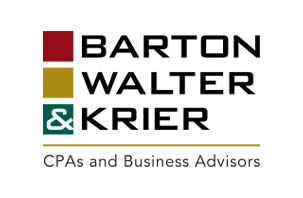Debt Management for Business Owners
November 20, 2023 | Barton Walter and KrierSome of you may shudder when you hear the word “debt,” but if you’re a business owner, chances are you know that debt is often necessary. And it doesn’t have to be a bad thing. Taking out a business loan is a common and useful tool for funding a business, especially in its early stages. The trick is managing your debt wisely so that it never grows out of control or otherwise hinders your operations. In today’s blog, we’ll explore strategies of debt management for business owners.
How Do Businesses Accumulate Debt?
Before we examine how to manage debt, we need to understand how and why businesses accumulate debt in the first place. As a business owner, you may use debt financing for a variety of purposes. You may need a loan to cover startup costs. You may need to borrow money to help with everyday business needs, known as “working capital.” Some business owners use loans to purchase expensive equipment, inventory, or real estate. Many of these costs would prove detrimental to small businesses if they had to be paid in full, but repaying a loan over a long period of time makes them much more manageable.
You can obtain a business loan from a bank, credit union, the U.S. Small Business Administration (SBA), or online and alternative lenders.
Debt Management Strategies
The first step in managing debt is reviewing all your sources of debt and keeping tabs on them. Make notes of all loans, overdrafts, credit cards, employee wages and benefits, and any other costs that could create debt. Small business accounting software is a great way to keep track of all your company’s assets and liabilities.
The next step is to choose a debt payment strategy. One popular method is called the “avalanche” strategy. This strategy suggests paying off those debts with the highest interest rates first. You would thus make large payments on these debts while making minimum payments on debts with lower interest. Eliminating these costly debts early will more quickly reduce your regular payments. However, these debts will usually take longer to pay off. That’s why some people prefer a different method.
The “snowball” strategy encourages you to prioritize your smaller debts first. For this strategy, you would make the largest possible payments to your smallest debt while making minimum payments to all others. Once that debt is paid off, you take the amount you were paying toward it each month and apply it to your next smallest balance. You then repeat this process, letting your largest payment “snowball” each month, until you are debt free.
Refinancing and Restructuring
For businesses with heavier debts, refinancing and restructuring can help avoid bankruptcy. Refinancing entails negotiating a new, more favorable credit agreement. This is commonly used to obtain lower interest rates, consolidate several debts into one, or seek a more lenient payment schedule. People often choose to refinance when interest rates drop, leading to lower rates that were not possible in a previous agreement. Refinancing also benefits your credit score, while restructuring can harm it.
Restructuring has similar goals but involves altering an already existing contract rather than creating a new one. The idea is to negotiate a situation that is mutually beneficial for the borrower and creditor and avoid bankruptcy, which neither party wants. A restructured agreement might lower interest rates and extend payment due dates.
Contact Barton, Walter, & Krier
Managing debts on top of running your business can be challenging, but you’re not alone. The certified public accountants at BWK are experts in evaluating business situations, executing efficient strategies, and keeping companies as profitable as possible. If you have questions about debt management for business owners, budgeting, taxes, or other financial topics, contact us today!

